54 Fascinating Facts About Mount Fuji, Japan’s Majestic Peak

Mount Fuji stands tall as Japan’s highest and most recognizable mountain, captivating sightseers for centuries with its almost perfect, snow-capped cone. Beyond its natural beauty, Fuji is considered a sacred symbol and source of artistic inspiration in Japanese culture.
Let’s dig into the volcano’s fiery origins, storied history, intriguing legends, and modern mountaineering attractions with this comprehensive guide to 30+ interesting facts about Fuji!
Overview
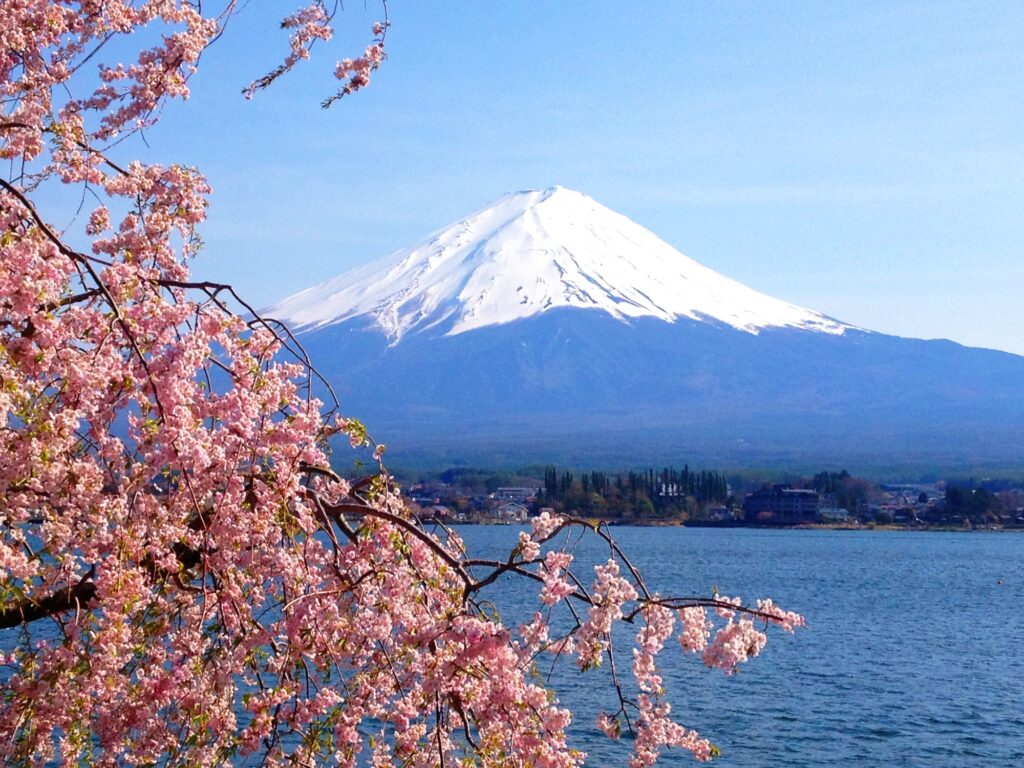
- Meaning Behind the Name: The true origins of “Fuji” remain unclear, with theories linking it to immortality and samurai warriors.
- Composite Volcano: Fuji formed from the overlapping of 3 separate volcanoes – Komitake, Ko-Fuji, and Shin-Fuji1.
- Active Status: Despite no eruptions since 1707, experts say Fuji should still be considered active due to evidence of underground magma shifts2.
- Spiritual Significance: As one of Japan’s 3 holy mountains, Fuji is a sacred site for Shinto, Buddhist, and samurai religious practitioners.
- Artistic Inspiration: Fuji’s scenic marvels have been famously depicted in centuries of Japanese literature, woodblock prints, and paintings.
- Popular Summit Trek: Over 200,000 hikers climb Fuji’s trails every summer during the official OPEN climbing season3.
- Demanding Terrain: The high-altitude trek presents risks like altitude sickness, volatile weather, and dizzying terrain.
- Proof of Conquest: Mountaineers cherish getting their walking sticks branded at mountain huts as bragging rights.
- Natural Heritage Site: Fuji and its surrounding landscape achieved UNESCO World Heritage status in 2013.
- Local Customs: Hearty cuisine, communal mountain inns, and mystical legends cater to visiting trekkers.
Scroll down for an in-depth exploration of Fuji’s unique attributes, mountaineering challenges, cultural allure, and more!
The Mysteries Enshrouding Fuji’s Past & Etymology
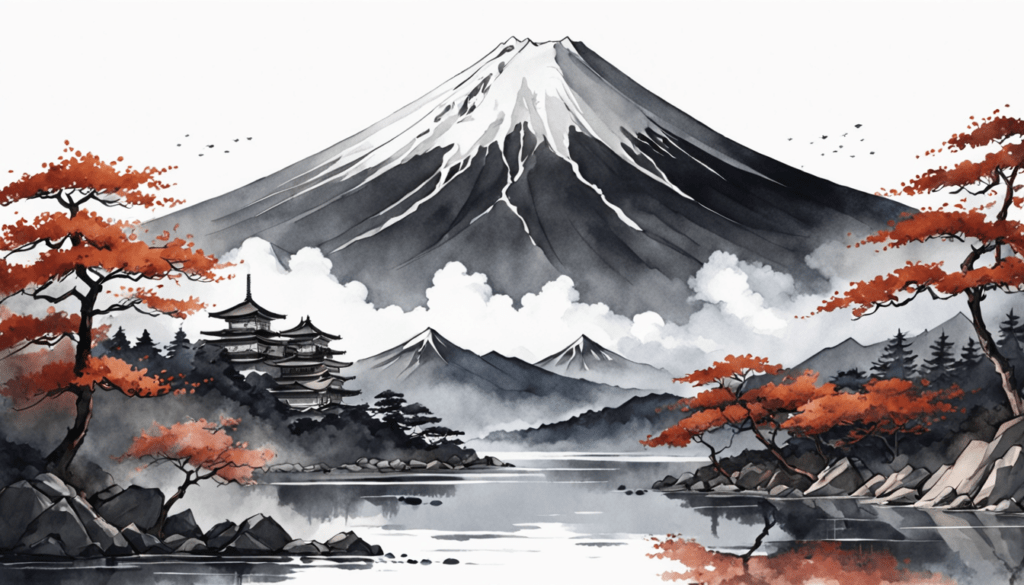
The iconic Mount Fuji is shrouded in legends, with the ancient meaning and linguistic origins of its name still sparking scholarly debate today.
- The present-day kanji (Chinese characters) comprising the name “Fuji” literally translate to “never-ending wealth” or “perpetual samurai,” but these are likely later re-interpretations. Linguists trace Fuji’s first recorded name back to a 12th-century text, where the characters instead seem to mimic the mountain’s domed silhouette.
- Some theorize “Fuji” has roots in words meaning “immortality” or “life without end,” influenced by a mythical 10th-century folk tale about a princess leaving the elixir of everlasting life upon the mountain.
- Other plausible explanations link back to the original dialect of Fuji’s indigenous Ainu people, to descriptions like “fire mountain” or “place where the sun arises,” and even to a simple written transcription of how “Fuji” sounds.
- Today’s title is almost certainly just an approximation of this once-verbal name’s pronunciation. But its true original meaning and the verbal name’s inception remain long-lost pieces of linguistic history.
How 3 Overlapping Volcanoes Built Fuji’s Signature Shape
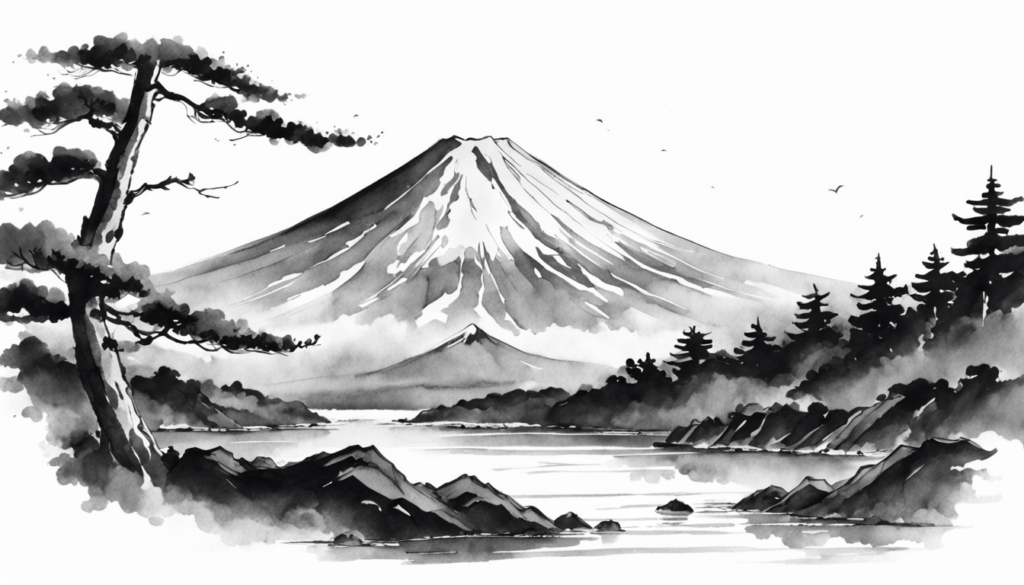
Fuji as it appears today is a “composite volcano” – formed gradually over millennia by the accumulation of rock debris, ash flows, and lava from 3 separate, overlapping volcanic peaks:
- The oldest base, Komitake, dates back some 700,000 years ago. It erupted several times before going dormant as activity shifted eastward4.
- Roughly 100,000 years ago, the Ko-Fuji volcano started developing, partially overlaying Komitake.
- The youngest and currently active cone, Shin-Fuji, began taking shape around 10,000 years ago. Scientists believe Shin-Fuji sits atop a separate magma chamber from its elder neighbors.
- Repeated eruptions from these 3 volcanic phases built up Fuji’s remarkably symmetrical, multi-peaked cone shape that now stands at 12,388 ft (3,776 m). The overlapping lava and debris flows also added to Fuji’s gradually sloping lower contours.
So in essence, today’s singular Mount Fuji is the cumulative result of 3 separate volcanoes which unified over thousands of years!
Monitoring An Active Volcano After Centuries of Quiet

You might assume Mount Fuji is a dormant volcano given its lack of activity in recent history. But geologists caution against underestimating this sleeping giant:
- Fuji’s last confirmed eruption occurred in December 1707, when the mighty blast hurled ash as far as Tokyo nearly 60 miles to the northeast. Smaller episodic earthquakes and venting of volcanic gases have followed.
- Experts admit predicting Fuji’s awakening is virtually impossible given volcanoes often lie deceptively peaceful for hundreds or thousands of years between eruptions.
- Still, they insist on classifying Fuji as an “active” volcano based on continued signs of magma movement deep below the surface recorded via dedicated monitoring equipment.
- An intricate network now tracks Fuji’s seismic activity, gas composition changes, underground temperature shifts, and small ground deformations hinting at potential magma chamber pressure buildups.
- If Fuji were to erupt violently again, the most at-risk areas surround its foothills and downstream river valleys. But its drifting ash could cripple transportation, electronics, and livelihoods across wide swaths of Honshu island.
So while Fuji may be still and subdued today, keeping a close eye on this sleeping giant’s vital signs seems wise given the scope of its explosive history!
Why Fuji is Considered One of Japan’s Most Sacred Sites
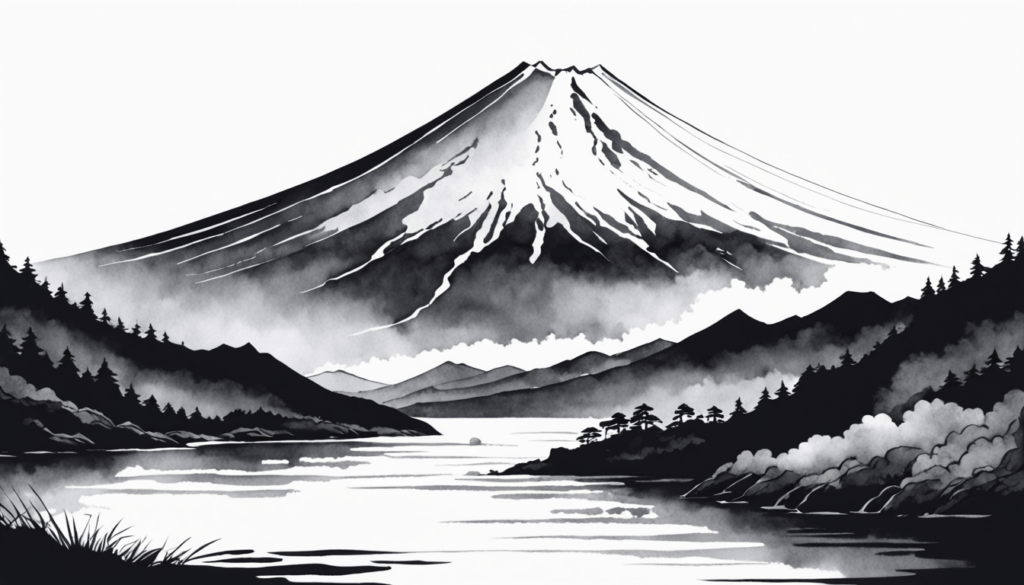
Beyond being an impressive natural monument, Mount Fuji holds deep cultural and religious significance for the Japanese people. Let’s examine its holy heritage:
- Fuji stands alongside Mount Tate and Mount Haku as one of Nihon-sansanzan – the 3 sacred or holy mountains of Japan deeply revered in local Shinto and Buddhist traditions.
- Religious texts reference Fuji as early as the 7th century AD. Indigenous nature worship, Shinto shrines, and Buddhist temples have venerated the volcanic peak for over a millennium.
- Ancient samurai also viewed climbing Fuji as a pilgrimage honoring their warrior credos, sometimes spreading the ashes of deceased lords upon the summit.
- Today you can still observe spiritual locals and tourists paying homage to Fuji through rituals like Ohachimeguri. Devotees meditate while circumambulating Fuji’s crater at dawn, contemplating the meaning of life.
- The overlapping lava flows of Fuji’s 3 volcanic cones are even said to hold mystical powers, radiating divine energy known as “reiki” that spiritualists can harness to heal or fortify the soul.
No doubt Fuji’s majestic natural form, coupled with ancient stories linking it to immortality, has stoked generations of holy wonder and worship on the legendary peak.
Capturing Fuji’s Allure in Art & Literature

Beyond Fuji’s geological and sacred attributes, the picturesque mountain has spellbound Japanese artists and authors for over 1,000 years thanks to its scenic vistas.
- Beloved tanka poems praising Fuji’s magnificence date back as early as the 8th century in anthologies like the Man’yōshū. This established Fuji as a literary muse right from Japan’s classical era.
- Over his long career, famous 19th-century woodblock print artist Katsushika Hokusai created the iconic “Thirty-six Views of Mount Fuji” series depicting Fuji from various mesmerizing angles. His ukiyo-e prints spread their visual brilliance worldwide5.
- Renowned Western painters like Claude Monet also chose Fuji as a subject for some of their most beloved Asian landscape works, amplifying its international artistic allure.
- Today you can find Fuji’s visage gracing everything from bank notes to beer bottles. Contemporary artists continually re-interpret the mountain, ensuring Fuji’s perpetual hold on Japan’s cultural imagination.
Clearly, Mount Fuji’s striking symmetrical form, snow-patched peaks, and skyline-dominating presence have proven irresistible inspiration across Japanese art history!
Why Hundreds of Thousands Tackle the Fuji Hiking Trails Each Summer
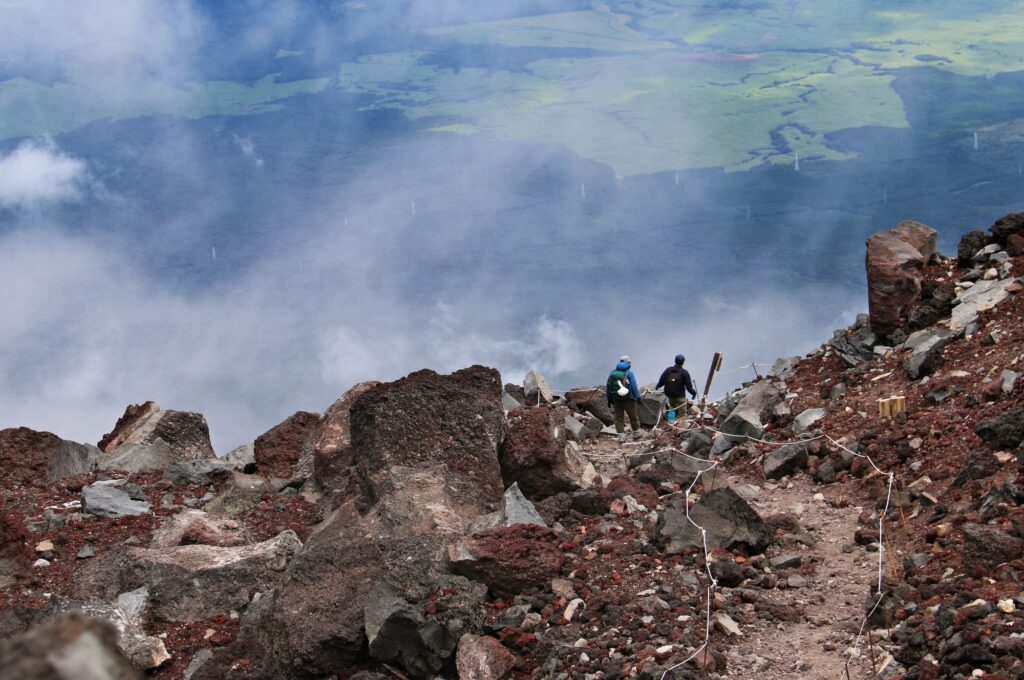
Mount Fuji’s famous hiking season kicks off every summer when crowds flock to climb Japan’s iconic peak and take in awe-inspiring sunrise views from the summit:
- The official Fuji mountain climbing season runs from July to early September when summit routes and visitor facilities open annually. Outside this period, climbing is highly discouraged or prohibited due to unpredictable weather extremes.
- Four omote or “front” routes established centuries ago lead trekkers up Fuji, but the Yoshida Trail is by far the most popular and heavily developed ascent path today. It begins at the Fuji Subaru Line 5th Station halfway point accessible via tour bus from Yamanashi Prefecture.
- Well over 200,000 hikers climb Fuji during peak season today, down from an unsustainable record of nearly 400,000 in the 1990s. Most climbers attempt to reach the top at night to glimpse the magnificent sunrise.
- While under 24 hours round-trip is feasible for conditioned athletes, most people prefer breaking up the long trek by staying overnight in one of the basic mountain huts dotting Yoshida Trail. Early reservations are essential given the massive crowds.
For Japanese and international adventure-seekers alike, climbing Fuji to catch the sunrise over Japan’s stunning landscape remains a hugely popular summer bucket list quest. Just be prepared for both large crowds and challenging terrain!
Why Fuji’s Summit Trek Demands Caution & Preparation
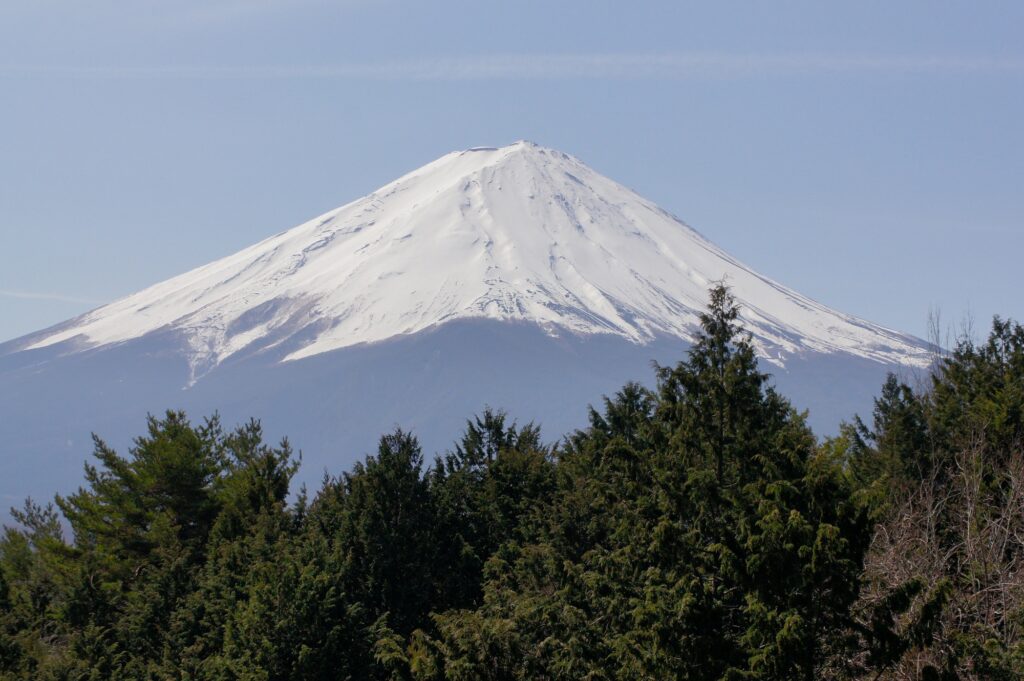
While supremely rewarding, completing Fuji’s roughly 8-10 hour roundtrip hike from 5th Station entails legitimate risks from the extreme high-altitude terrain:
- As Japan’s highest peak by far, Fuji’s elevation and rapid ascent leave climbers prone to acute mountain sickness including headaches, vomiting, disorientation, and poor decision-making. Thin air and overexertion compound symptoms.
- Fuji’s capricious climate also endangers hikers, who must be equipped to handle frigid winds, sudden temperature drops, thunderstorms with intense lightning, whiteout conditions, and more depending on weather systems clashing with the topography. Checking forecasts religiously is essential but imperfect.
- While trails are well-marked, sections cross dizzyingly high rock fields with sheer cliff faces looming just off the narrow path. Disorientation from altitude sickness poses serious tripping and falling hazards.
- Other climbing dangers include toppling rocks, simple exhaustion, and failure to adequately acclimate to the elevation. Proper footwear, warmth, lighting, nutrition, and pacing help mitigate risk along with turning back immediately at the first signs of trouble. But vigilance trumps all for a safe roundtrip.
In the end, smart preparation, caution, and respect for the extremes of high-altitude trekking let hikers both fully enjoy and safely conquer climbing iconic Mount Fuji!
Tokens Proving You Summited Japan’s Highest Peak

Earning bragging rights as one of the intrepid few making it to the tippy top of Mount Fuji each summer carries serious cachet in Japan. Let’s explore popular ways climbers memorialize their hard-won Fuji conquest:
- A prized souvenir is getting your walking stick branded at one of the summit mountain huts to prove reaching the top. Brands feature Japanese characters along with the specific date and name of the hut visited.
- The POSUTO-FUJI post office located a few steps from Fuji’s actual summit offers special postcards you can mail to friends and family stamped with the rare “Mount Fuji Summit Post Office” postmark. Mailing letters from the highest post office in Japan is a wonderful way to immortalize reaching the top!
- The Subaru Line 5th Station sports a dedicated Mount Fuji Museum where climbers finishing can obtain personalized Summit Certificates as proof of their impressive accomplishment. You can even design custom Fuji Subaru Line certificates on your smartphone to share online or print at home!
No self-respecting Fuji conqueror returns from the long trek empty-handed with so many options to officially validate you stepped atop Japan’s highest summit!
Why Fuji Earned UNESCO World Heritage Status
In 2013, Mount Fuji along with its surrounding lakes, lava trails, and revered sites received prestigious UNESCO World Heritage distinction recognizing its global natural and cultural significance:
- UNESCO cited Fuji’s remarkably iconic volcanic landscape, coupled with how profoundly it has inspired art, culture, and spirituality in Japan for over 1 millennium, as key reasons this legendary peak merited World Heritage Site protection6.
- The designation includes shielding not just Fuji’s summit but also pristine woodlands, wildlife habitats, steaming lava tree molds, and the scenic Fuji Five Lakes dotting its rolling foothills.
- This UNESCO protection now promotes sustainable access for visitors while tackling threats posed by tourism saturation, climate change, invasive species, litter, and other environmental pressures that could undermine Fuji’s delicate natural ecosystems and heritage.
Our planet deems conserving majestic Mount Fuji along with all it symbolizes as a top-tier priority for safeguarding Japan’s natural legacies vital to our global human heritage overall!
Fuji Hospitality: Food, Lodging & Superstitions for Climbers
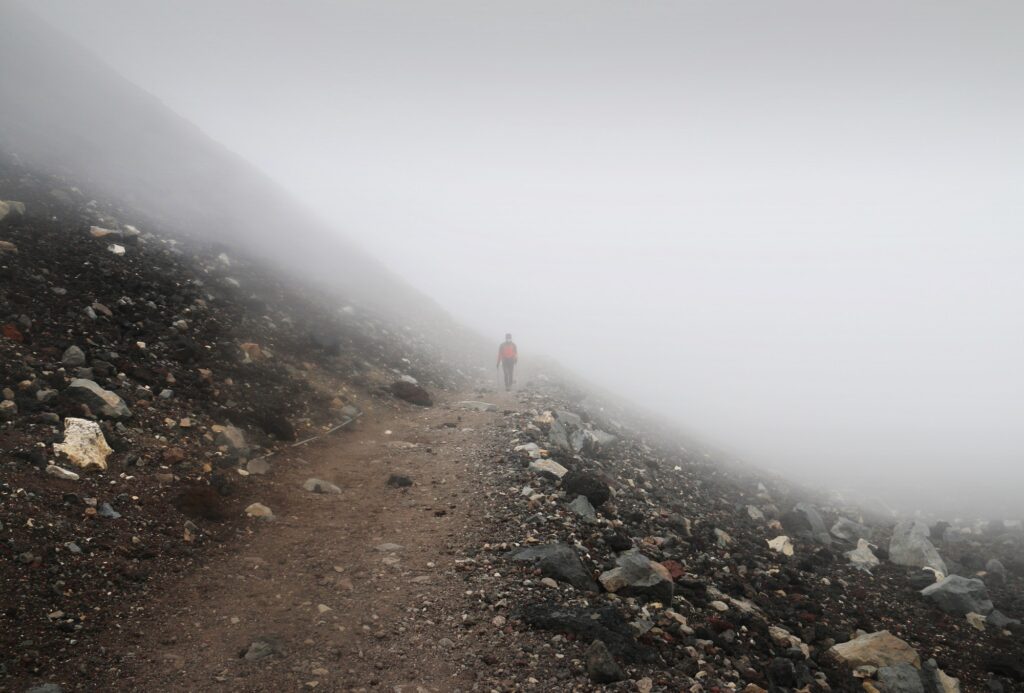
A thriving hospitality ecosystem blooms every summer to nourish the legions attempting Fuji’s peak. Let’s samplekey attractions sustaining mountaineers on their quest:
Fuji Fare
- Hearty Japanese curry, udon noodle bowls, rice dishes, vegetable tempura, and the like make up most menu staples for refueling climbers at 5th Station and above.
- Given Buddhism’s influences on Fuji’s spiritual heritage, strict vegetarian meals also abound for those eschewing meat during their holy pilgrimage.
- Simple snacks like trail mix, cookies, crackers, bananas, and energy gels keep in your pack for quick bursts of carbs and calories when burning energy on the rugged trail.
No-Frills Overnight Mountain Huts
- Spartan overnight mountain huts spaced along Yoshida Trail offer communal sleeping, basic toilets (often just holes in the ground!), and sometimes hot drinks for a few thousand yen a night. Advance reservations are absolutely essential.
- While far from luxury suites, these rustic cabins let climbers rest a few hours rather than push over 20 km roundtrip start-to-finish. Just bring earplugs for loud, packed bunkrooms!
Mystical Fuji Folklore
- Ancient legends and modern rumors swirl about supposed paranormal phenomena occurring in Fuji’s thin high-altitude air. Lucky climbers might witness fanciful mirages like the “Diamond Fuji” optical illusion or glimpse otherworldly lights nicknamed “burning wagons.”
- Superstitious climbers take care to politely request the mountain’s permission before passing through each successive torii gate. These sacred arches demarcate the transition into Fuji’s progressively holier upper realms guarded by temperamental gods per Shinto beliefs.
- A popular Japanese saying goes ”He who climbs Mount Fuji is a wise man, he who climbs twice is a fool.” This stems less from discouragement and more from the ancient belief that those experiencing Fuji’s spiritual powers once need not ever return! Of course, many hardcore climbing fans happily defy this old wisdom.
So while facilities are spartan along the twisting Yoshida Trail route, the shared sense of camaraderie and mirthful mystique enveloping exhausted yet elated Fuji hikers keeps drawing back hundreds of thousands season after season!
Key Takeaways: Tips for Mount Fuji Visitors
To recap Mount Fuji’s epic highlights, here are the essential facts and travel tips worth remembering:
- Check official weather forecasts plus trail/lodging availability obsessively when planning your summer climb. Fuji is prone to volatile, extreme conditions so build ample contingency time and backup options into schedules.
- Train for the grueling, high-altitude trek beforehand, and invest in appropriate non-cotton base layers, wind/rain protective outer shells, sturdy boots, hiking poles, headlamps, gloves, and so on. Gear matters up there.
- Pack or purchase plenty of high-protein, high-carb snacks and meals. Refueling is difficult on the barren mountain, yet energy demands spike dramatically.
- Travel light otherwise. Overnight huts provide basic bedding, but space is very limited.
- Carry printed maps of trail routes/landmarks plus offline GPS guidance in case connectivity drops. Navigating timing and junctions across Fuji’s dark, indifferent landscape is critical yet challenging.
- Climb at your own pace. Rush too fast up Fuji and altitude sickness can hit brutally for newbies. Listen to your body, not other hikers. Descend immediately if conditions deteriorate. Pride means nothing versus safety.
While a rewarding pilgrimage, Fuji is never to be trifled with. Respect her power, savor her beauty, and she will welcome you warmly as so many artists, spiritualists and adventurers can gratefully attest!
- https://www.britannica.com/question/How-was-Mount-Fuji-formed [↩]
- https://en.wikipedia.org/wiki/H%C5%8Dei_eruption [↩]
- https://www.theuiaa.org/mountain-medicine/fuji/ [↩]
- https://www.yamanashi-kankou.jp/english/english042.html [↩]
- https://en.wikipedia.org/wiki/Thirty-six_Views_of_Mount_Fuji [↩]
- https://whc.unesco.org/en/list/1418/ [↩]





